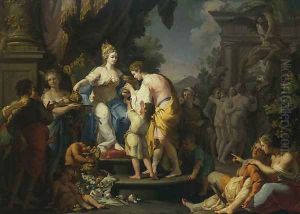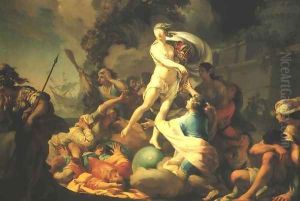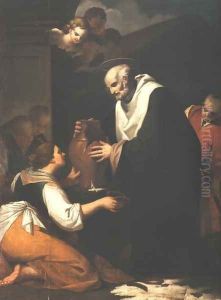Tadeusz Kuntze-Konicz Paintings
Tadeusz Kuntze, also known by the Italianized version of his name, Taddeo Kuntze, as well as Tadeusz Konicz, was a Polish painter of the Baroque period. Born in 1727 in Silesia, which was then part of the Kingdom of Prussia and is now in Poland, he showed an inclination towards painting from a young age.
Kuntze initially trained under the guidance of local artists before he embarked on a journey to further his education and skills in Italy, which was a common practice among aspiring artists of the era due to Italy's rich art history and presence of masterworks. He spent a significant amount of time in Rome, which was a hub for artists, and it's here that he fully embraced the Baroque style, marked by its dramatic use of light and shadow, rich colors, and dynamic compositions.
His work often incorporated religious and mythological themes, which were popular among patrons of the Baroque era. Kuntze’s paintings were well-received, and his reputation grew, leading to numerous commissions from churches and for private collections. His style was characterized by a combination of dynamic movement, rich palette, and an emphasis on the dramatic interplay between light and darkness.
Throughout his career, Kuntze remained active in the artistic circles of Rome. Despite his success in Italy, he maintained strong connections with his homeland, contributing to the artistic landscape in Poland as well. He is considered one of the notable Silesian painters of his time.
Kuntze's death occurred in 1793. Although he may not be as widely recognized as some of his contemporaries, his works contribute to the rich tapestry of Baroque art and offer insight into the cultural exchanges between Poland and Italy during the 18th century. His paintings are preserved in various collections, serving as a testament to his skill and the artistic movements of his time.


